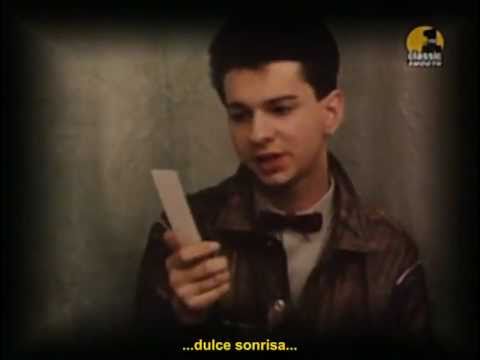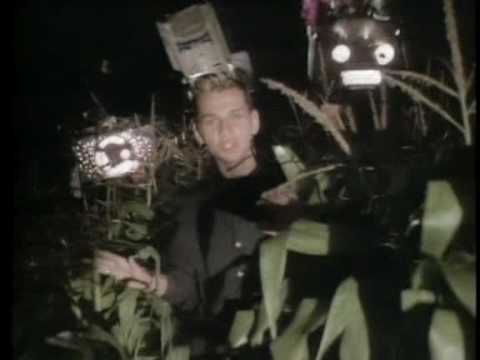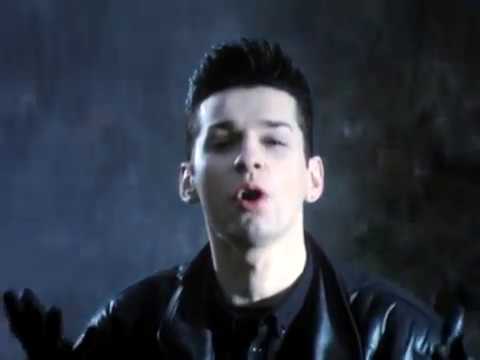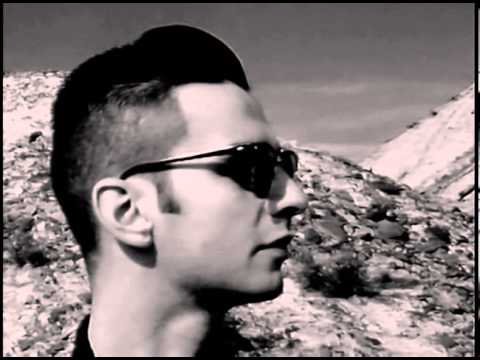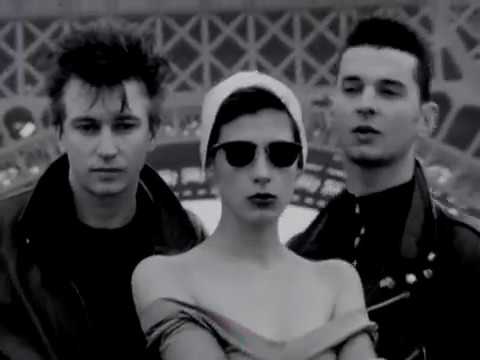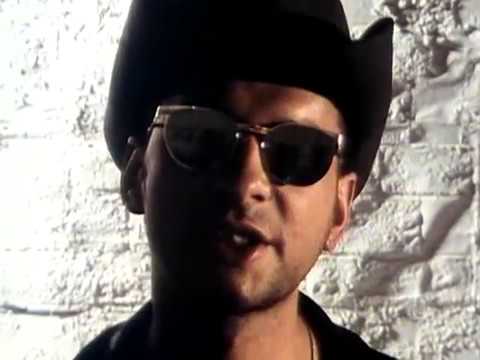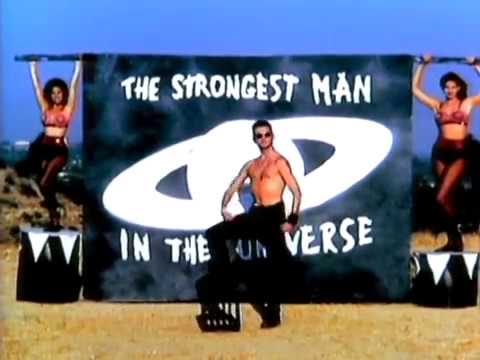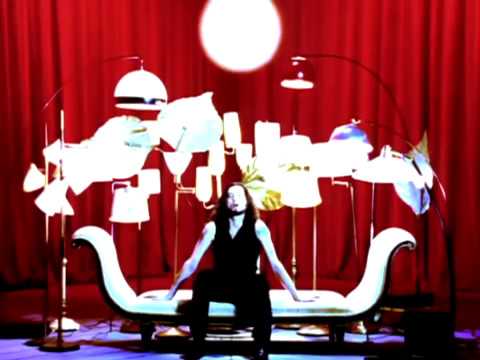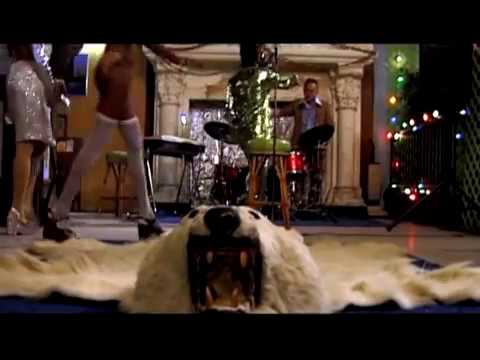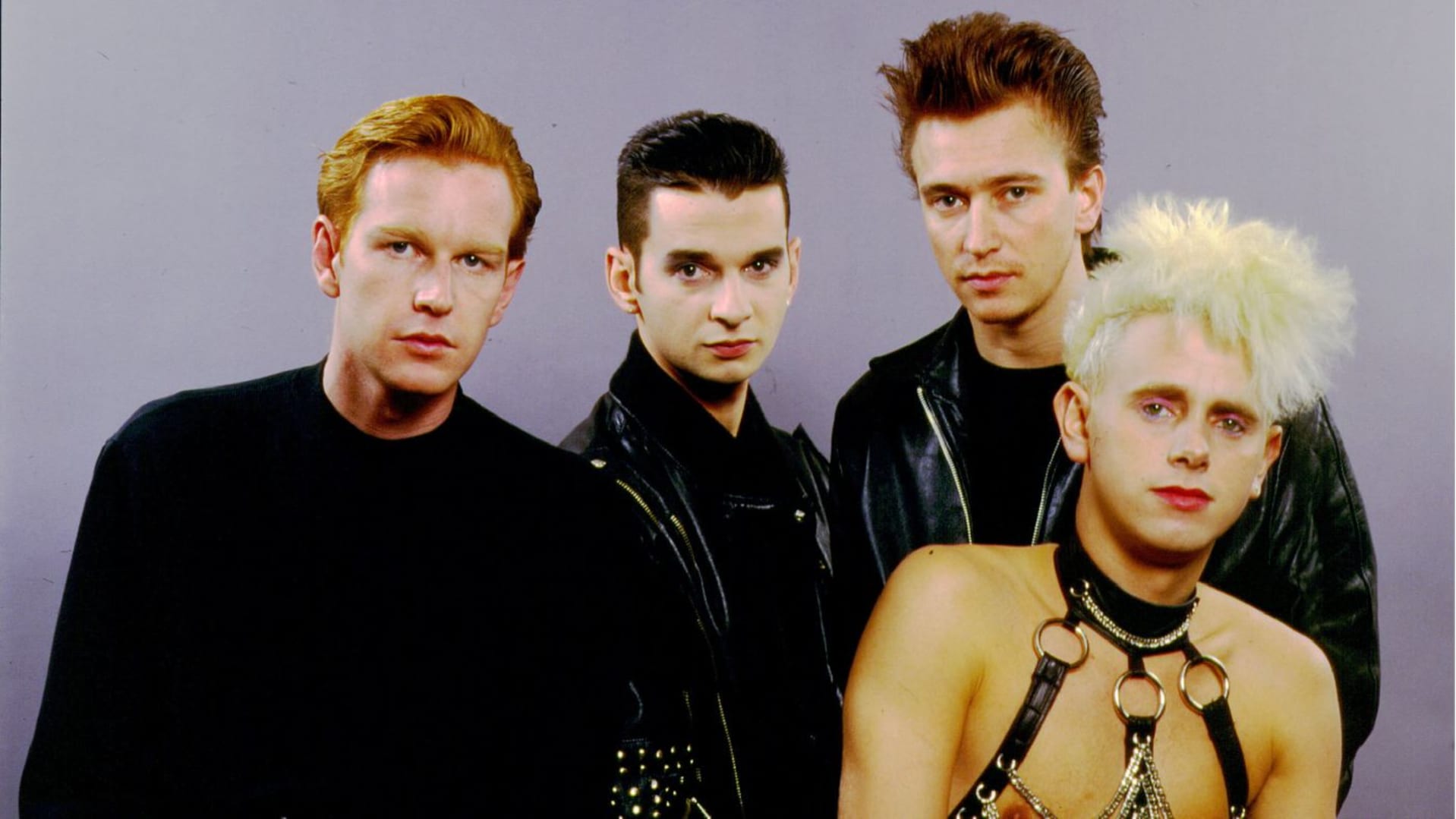
Tracing Depeche Mode’s Fashion Through Their Best Videos
On February 20, Depeche Mode celebrated the 35th anniversary of their first single, “Dreaming Of Me”, so we’ve taken the opportunity to look back over the band’s lengthy career. DM has released some 57 videos, some of which are epic and high-impact, while others are downright embarrassing (primary-colored facepaint, anyone?). From wool-sweater geek to androgynous bondage, high-waisted denim to glitter suits, Dave Gahan, Martin Gore and their cohorts have always been a quirky crew of tastemakers. Their dark and melancholy late-’80s look was particularly influential, in part thanks to the shadowy mini-worlds created by Dutch photographer and filmmaker Anton Corbijn. Many of the videos directed by Corbijn (who’s also behind Joy Division’s “Atomosphere” video and biopic Control) ended up on our list of the band’s 10 most fashionable videos. “Depeche mode” does translate to “fast fashion,” after all.
“See You” (Dir. Julien Temple, 1982)
“See You” may have been the first time Depeche Mode used objects to emulate synthesizers and drum machine samples, a technique they employed throughout the ’80s—even in live performances. Here, a baby-faced Dave Gahan with a stud in his nose plays tag with a mysterious girl in a department store while the rest of the band punches buttons to simulate sounds from calculators and cash registers. Gahan’s outfit is positively nerd-chic—a bomber jacket and pants stuffed into his socks—and his bandmates are in their best business-casual attire of ties, suit jackets and wool sweaters. Quirky and cute, this video is a memento of the sugary synthpop that dominated DM’s early years.
“Love, In Itself” (Dir. Clive Richardson, 1983)
The album Construction Time Again was a pivotal moment in the band’s career. The industrial and complex song was the last gasp of a once happy-go-lucky synthpop band, and the video it marked a transitional period for the group’s fashion. Dave Gahan plays the role of loveable poster boy with his blond spiked hair, tanned skin and nude lipstick, while Martin Gore contrasts with a harness and bullet belt layered over a white tee and leather pants. They wander through a surprisingly well-lit cave while singing, clapping and even blowing trumpets.
https://www.youtube.com/watch?v=CTwiKY-T7KE
“It’s Called a Heart” (Dir. Peter Care, 1985)
This video marks the band’s apparent transition from a synthpop act into electronic gods. It has little content besides clips of the boys in a cornfield, banging on things that magically appear at their disposal. “It’s Called A Heart” predated DM’s break into international superstardom, and during that era their fashion was a lot more experimental and less sexual than the looks Anton Corbijn featured a few years later. Gahan’s frosted tips, tanned skin and caked-on maquillage work well with Martin Gore’s androgynous ensemble of a cowboy hat, leather skirt, black lipstick and strand of pearls. At this point, all members had adopted black motorcycle jackets, a precursor to their late ‘80s aesthetic.
“Stripped” (Dir. Peter Care, 1986)
What could be more romantic than flowers strewn over a dilapidated car in the dead of the night? This video was shot just outside Hansa Studios in Berlin, where DM had recorded Black Celebration. (Yes, that’s also where David Bowie’s epic Berlin sessions were held.) The song’s pure aesthetic melancholy—complex and masterful in production and sampling—is brought to life by a foggy pink and yellow atmosphere of burned and smashed cars. Here, the band has found it: that visual darkness to match the somber mood of their music. Decked out in leather jackets, black gloves—black everything—they continue their tradition of using objects to emulate sounds, this time wielding uber-masculine sledgehammers and blowtorches, a bit more dangerous than their toys from the early days.
“Pimpf” (Dir. Anton Corbijn, 1987)
The great thing about Depeche Mode is that everything they did in the late ‘80s was epic—so epic, in fact, that they could make a music video giant from a song that didn’t even have lyrics. Once exclusive to the VHS titled Strange—A Black And White Mode, “Pimpf” was the final installment of the film, a glorious ode to the Depeche Mode narrative thus far. The video begins with Martin Gore playing the piano in a harness, and this time he appears without a shirt, an upgrade from his 1983 look. The song crescendos into timpani drums and chants as the remaining trio, in their finest studded leather, bangs on the walls of the “Museo Depeche Mode.” There is something inexplicably arousing as Gore frantically climbs up and down the piano until the shack collapses at the song’s climax under the pressure of the hammering beat.
“Strangelove” (Dir. Anton Corbijn, 1987)
After this video’s premiere in 1987, it’s likely that many rushed to purchase an off-shoulder bodycon dress and over-the-elbow gloves. Anton Corbijn created a fantastical world of high-end sleaze in the “Strangelove” video, and it’s the perfect accompaniment to a song about the darker, tragic and more quirky side of love. DM is dressed in their uniform of black leather and sunglasses, while Dave Gahan’s needle-sharp sideburns and cartilage piercing are stunning on their own. Masked women and skintight latex steal the show in this off-kilter and sexy video, suggesting volumes more than a midday’s walk down cobblestone streets with a fashionable bulldog.
“Personal Jesus” (Dir. Anton Corbijn, 1989)
Whether or not you’re a fan of “Personal Jesus”, its video is undeniably epic. The sheer attitude and fashion sensibility conveyed in this sepia-toned Western is right on point. Anton Corbijn manages to transform a rundown Spanish desert hotel into a brothel paradise teeming with beautiful dark-haired women in fringe tops, chandelier earrings and high-waisted bell bottoms. DM’s detailed ensembles include cowboy boots with spurs, bandanas, harmonicas and cowboy hats. This video is proof that fringe need not be limited to the hair metal genre—Martin Gore’s black leather fringe jacket paired with a metallic shirt and conch belt is pure beauty.
“Halo” (Dir. Anton Corbijn, 1990)
Anton Corbijn’s magic is prevalent when it comes to DM music videos from the Music For The Masses and Violator eras. His vision provided the band with a whole new aesthetic and mysterious storyline. “Halo” is no different: a tale of a twisted romance at an abandoned circus car in which the tough Dave Gahan—“the strongest man in the universe”—loses his woman to Martin Gore, a lowly clown. Gahan’s character, in a black MC jacket, very high-waisted jeans, tattoos and silver accessories, cannot, despite all his badassery, keep his grip on the girl. The coattails and top hats of Andrew Fletcher and Alan Wilder alongside the tutus of the backup dancers add to the peculiar flair to the video, its appeal an awkward tragedy of unrequited romance.
“In Your Room” (Dir. Anton Corbijn, 1994)
Anton Corbijn’s vision during the Songs Of Faith And Devotion era was a series of saturated music videos that took Depeche Mode out of the ‘80s. “In Your Room” is a nod towards the band’s slew of previous Corbijn and Mode collaborations and serves as a retrospective of their work up to that point. The most alluring part is not Alan Wilder’s drumming—this video would be his last with the band—but rather Martin Gore’s silver sequined shorts and matching top, which he pairs with silver Doc Martens that hit mid-calf. The metallic ensemble worked well in contrast to Dave Gahan’s grungy guitar-rock shag and pencil-thin facial hair. Bonus points for the band being shackled to a chair.
“It’s No Good” (Dir. Anton Corbijn, 1997)
Depeche Mode had always taken itself pretty seriously before “It’s No Good”, which was a surprising poke at themselves after Alan Wilder’s departure and Dave Gahan’s overdose. In his green sequined suit, gold baubles and bouffant, Gahan’s character is a sleazeball, a washed-out lead singer who is obviously clinging to his glory days of yesteryear. With two sparkly and severely ‘90s-style dancers in tow, DM still maintains a certain level of melancholy as black-clad Martin Gore (sporting a side-shaved and slicked-back hairstyle that’s just as relevant almost 20 years later) and Fletch tote an unwieldy keyboard and stand-up bass behind the glamorous trainwreck of Gahan.
Published March 02, 2016.

